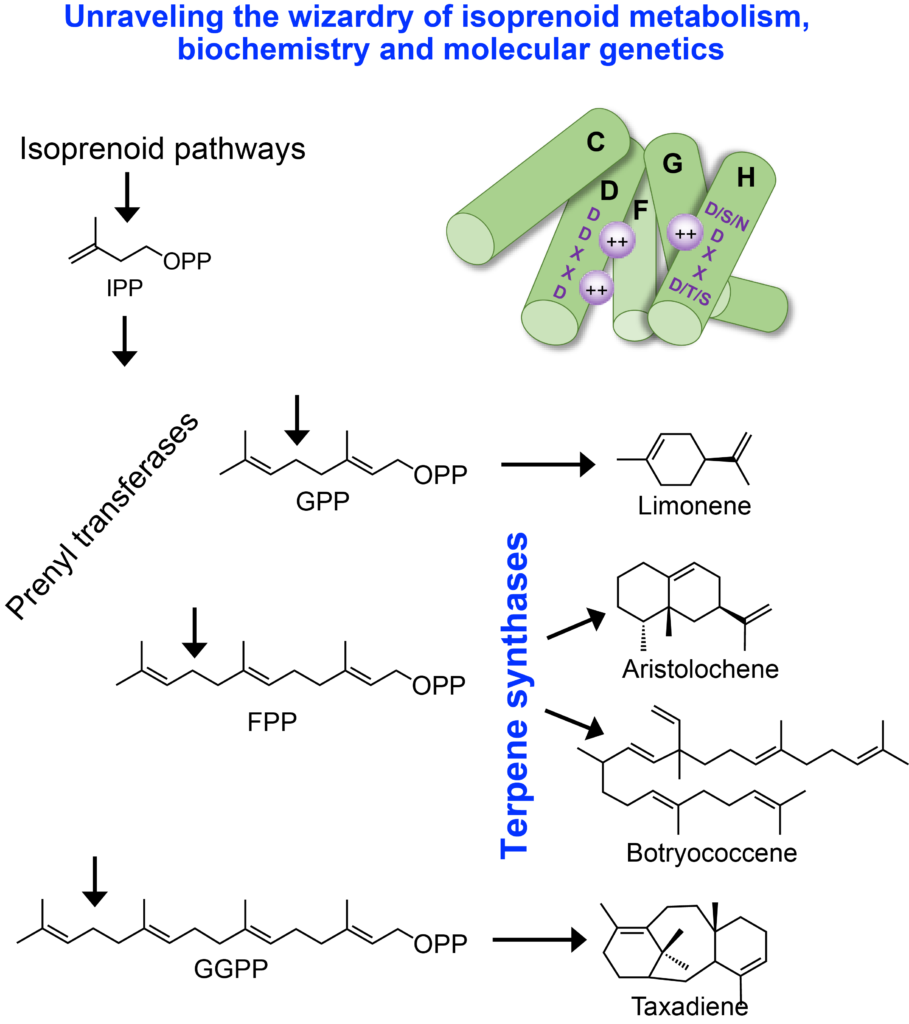
The Chappell laboratory is dedicated to understanding the mechanisms that plants and microbes use to make the dizzying array of terpene/isoprenoid natural products. We have utilized a wide range of experimental strategies including structure-function comparisons of genes and proteins (Back et al., 1996; Starks et al., 1997; Greenhagen et al., 2006), metabolic engineering (Wu et al., 2006; Takahashi et al., 2007a, Zhuang and Chappell, 2015), synthetic biology (Rising et al., 2015) and cross-comparisons between many different plants and other organisms (Takahashi et al., 2007b; Niehaus et al., 2011, 2012). If we are successful in identifying genes encoding for these intriguing biosynthetic transformations and manipulating these genes to result in chemical diversification, then it stands to reason we would need the means for biosynthesizing these various compounds on a small scale (mg level) for chemical characterization and large scale (gm level) to test for their biological activities. Hence, we have developed diverse hosts for the robust production of all classes of terpenes, utilizing these to elucidate novel catalytic activities for diverse terpene biosynthetic enzymes (Niehaus et al., 2011, 2012; Yeo et al., 2013; Zhuang and Chappell, 2015) and innovative chemical applications (Tateno et al., 2020).
We always welcome others to our lab and invite you to contact us directly
